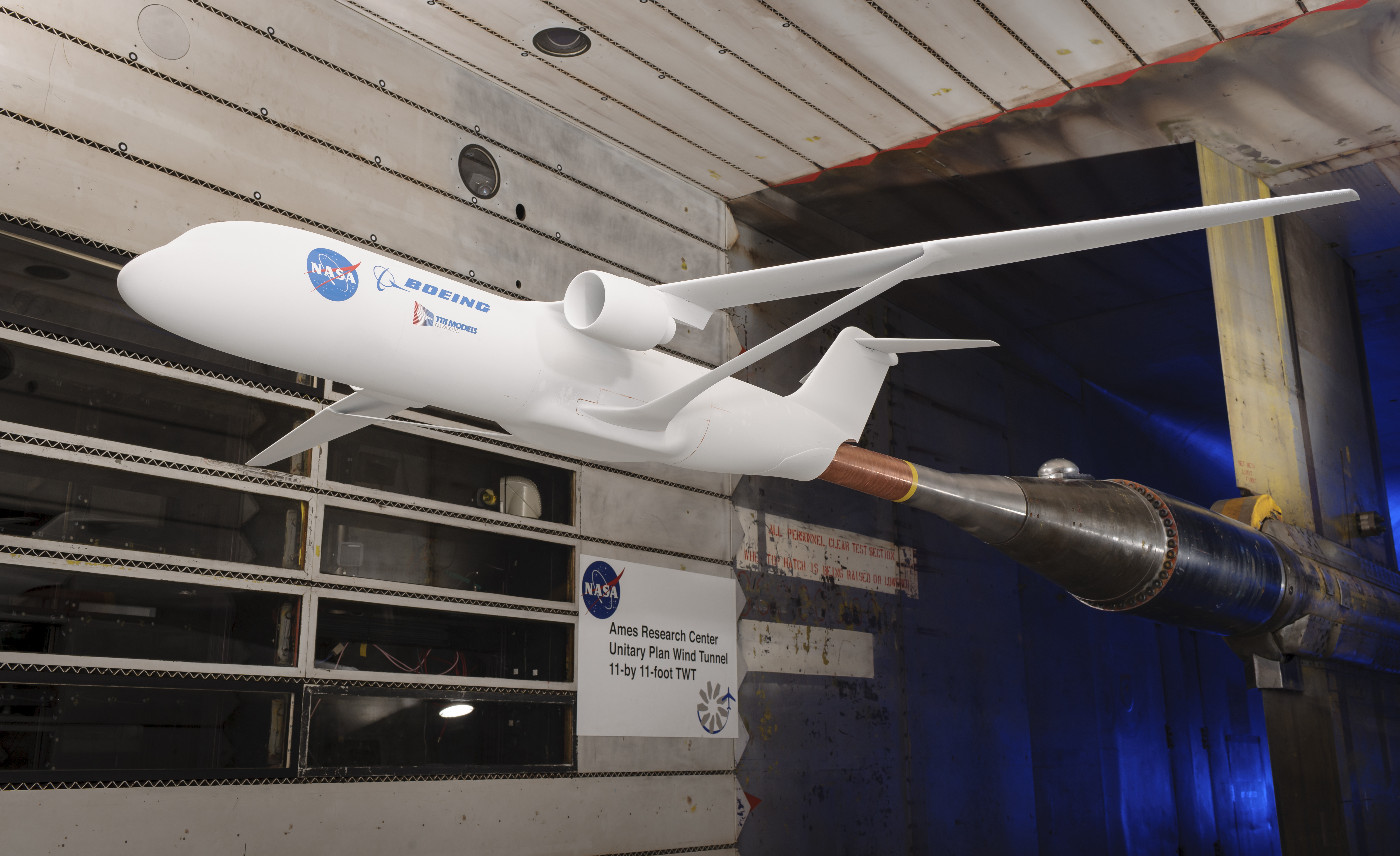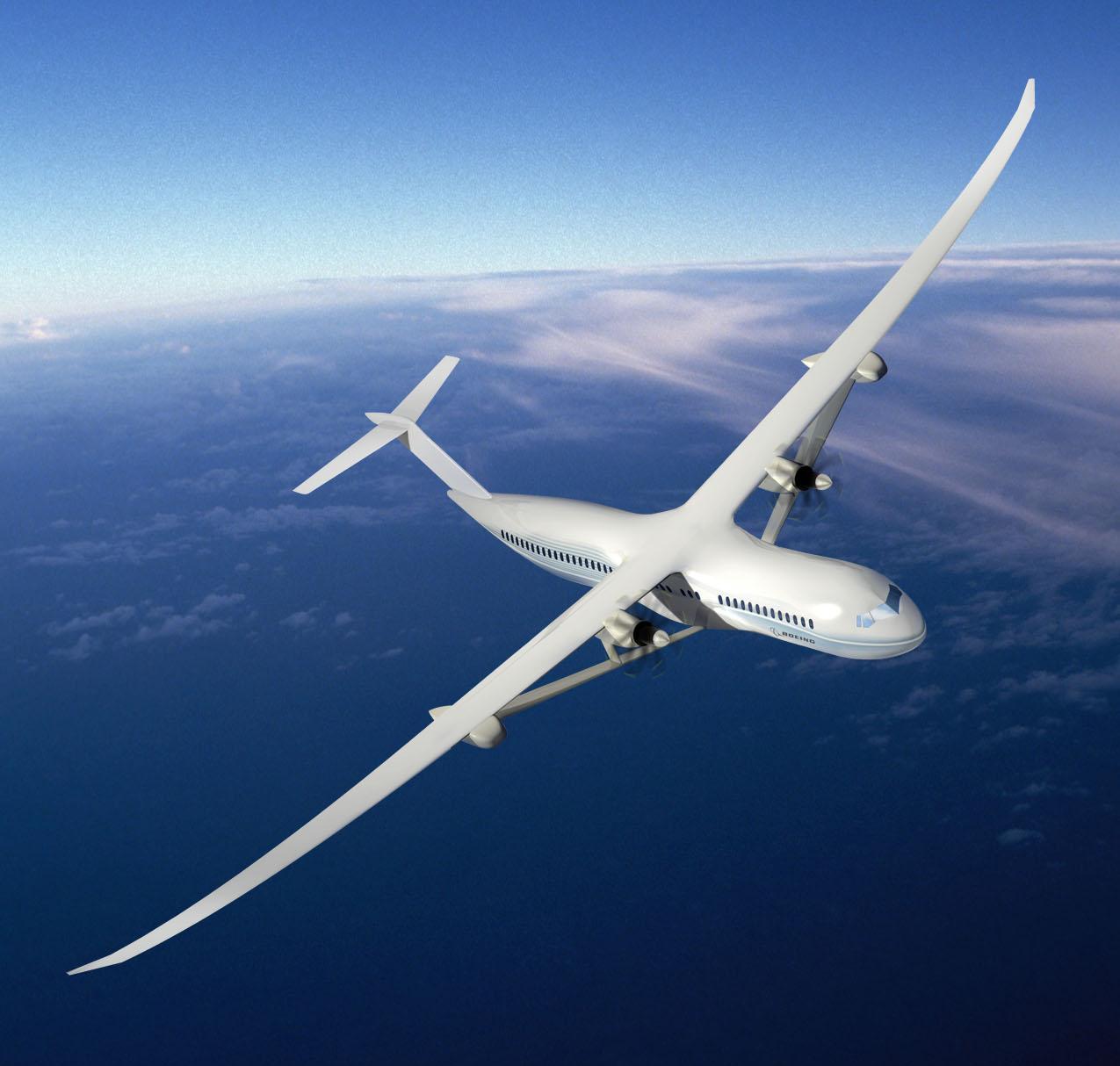SUGAR Volt on:
[Wikipedia]
[Google]
[Amazon]
 Boeing Truss-Braced Wing are airliner designs studied by Boeing with Bracing (aeronautics), braced, high Aspect ratio (wing), aspect ratio wings.
Boeing Truss-Braced Wing are airliner designs studied by Boeing with Bracing (aeronautics), braced, high Aspect ratio (wing), aspect ratio wings.
 SUGAR Volt is the hybrid aircraft concept proposed by a team led by Boeing's Research & Technology division. It is one of a series of concepts put forward in response to a request for proposals for future aircraft issued by NASA. It is proposed that SUGAR Volt would use two hybrid turbofans that burn conventional jet fuel when taking off, then use electric motors to power the engines while flying. SUGAR stands for Subsonic Ultragreen Aircraft Research; "Volt" suggests that it would be at least partly powered by electricity.
SUGAR Volt would have emissions about 70 percent lower than average airliners today. Noise pollution will also be lower than airliners today.
This hybrid-electric approach however remains to be balanced against increased complexity, large electric engine and battery size and weight.
Relying partly on electric power might reduce specific fuel consumption (SFC) compared to a standard turbine-only design (turbofan or lower-consumption turboprops).
SUGAR Volt is designed with a long, Bracing (aeronautics), braced, high Aspect ratio (wing), aspect ratio wing that decreases induced drag due to lift. The wings of SUGAR Volt would enable it to take off in a shorter distance and generate less noise. The outer wings of the SUGAR Volt should fold to save ground space, increasing weight.
SUGAR Volt is the hybrid aircraft concept proposed by a team led by Boeing's Research & Technology division. It is one of a series of concepts put forward in response to a request for proposals for future aircraft issued by NASA. It is proposed that SUGAR Volt would use two hybrid turbofans that burn conventional jet fuel when taking off, then use electric motors to power the engines while flying. SUGAR stands for Subsonic Ultragreen Aircraft Research; "Volt" suggests that it would be at least partly powered by electricity.
SUGAR Volt would have emissions about 70 percent lower than average airliners today. Noise pollution will also be lower than airliners today.
This hybrid-electric approach however remains to be balanced against increased complexity, large electric engine and battery size and weight.
Relying partly on electric power might reduce specific fuel consumption (SFC) compared to a standard turbine-only design (turbofan or lower-consumption turboprops).
SUGAR Volt is designed with a long, Bracing (aeronautics), braced, high Aspect ratio (wing), aspect ratio wing that decreases induced drag due to lift. The wings of SUGAR Volt would enable it to take off in a shorter distance and generate less noise. The outer wings of the SUGAR Volt should fold to save ground space, increasing weight.
 Boeing Truss-Braced Wing are airliner designs studied by Boeing with Bracing (aeronautics), braced, high Aspect ratio (wing), aspect ratio wings.
Boeing Truss-Braced Wing are airliner designs studied by Boeing with Bracing (aeronautics), braced, high Aspect ratio (wing), aspect ratio wings.
SUGAR Volt
 SUGAR Volt is the hybrid aircraft concept proposed by a team led by Boeing's Research & Technology division. It is one of a series of concepts put forward in response to a request for proposals for future aircraft issued by NASA. It is proposed that SUGAR Volt would use two hybrid turbofans that burn conventional jet fuel when taking off, then use electric motors to power the engines while flying. SUGAR stands for Subsonic Ultragreen Aircraft Research; "Volt" suggests that it would be at least partly powered by electricity.
SUGAR Volt would have emissions about 70 percent lower than average airliners today. Noise pollution will also be lower than airliners today.
This hybrid-electric approach however remains to be balanced against increased complexity, large electric engine and battery size and weight.
Relying partly on electric power might reduce specific fuel consumption (SFC) compared to a standard turbine-only design (turbofan or lower-consumption turboprops).
SUGAR Volt is designed with a long, Bracing (aeronautics), braced, high Aspect ratio (wing), aspect ratio wing that decreases induced drag due to lift. The wings of SUGAR Volt would enable it to take off in a shorter distance and generate less noise. The outer wings of the SUGAR Volt should fold to save ground space, increasing weight.
SUGAR Volt is the hybrid aircraft concept proposed by a team led by Boeing's Research & Technology division. It is one of a series of concepts put forward in response to a request for proposals for future aircraft issued by NASA. It is proposed that SUGAR Volt would use two hybrid turbofans that burn conventional jet fuel when taking off, then use electric motors to power the engines while flying. SUGAR stands for Subsonic Ultragreen Aircraft Research; "Volt" suggests that it would be at least partly powered by electricity.
SUGAR Volt would have emissions about 70 percent lower than average airliners today. Noise pollution will also be lower than airliners today.
This hybrid-electric approach however remains to be balanced against increased complexity, large electric engine and battery size and weight.
Relying partly on electric power might reduce specific fuel consumption (SFC) compared to a standard turbine-only design (turbofan or lower-consumption turboprops).
SUGAR Volt is designed with a long, Bracing (aeronautics), braced, high Aspect ratio (wing), aspect ratio wing that decreases induced drag due to lift. The wings of SUGAR Volt would enable it to take off in a shorter distance and generate less noise. The outer wings of the SUGAR Volt should fold to save ground space, increasing weight.
Transonic truss-braced wing
Using a shortened MD-90 airframe, a full-scale Sustainable Flight Demonstrator (SFD), designated the Boeing X-66, X-66A, should fly in 2028, outlining a possible family of 130-to-210-seat aircraft. The full-scale Sustainable Flight Demonstrator (SFD) is designated the Boeing X-66, X-66A.See also
* ecoDemonstrator * Airbus A320neo family#Wing of Tomorrow, Airbus: Wing of TomorrowReferences
External links
* * * * * * * * {{cite conference , url=https://ntrs.nasa.gov/archive/nasa/casi.ntrs.nasa.gov/20140011160.pdf , title=Aerodynamic Analysis of the Truss-Braced Wing Aircraft Using Vortex-Lattice Superposition Approach , conference=32nd American Institute of Aeronautics and Astronautics, AIAA Applied Aerodynamics Conference , date= 2014 , author=Eric Ting , author2=Kevin W. Reynolds , author3=Nhan T. Nguyen , author4=Joseph Totah , website=NASA Technical Reports Server 2010s United States experimental aircraft